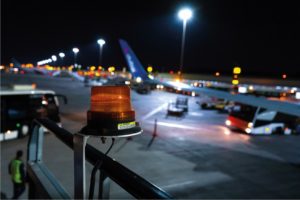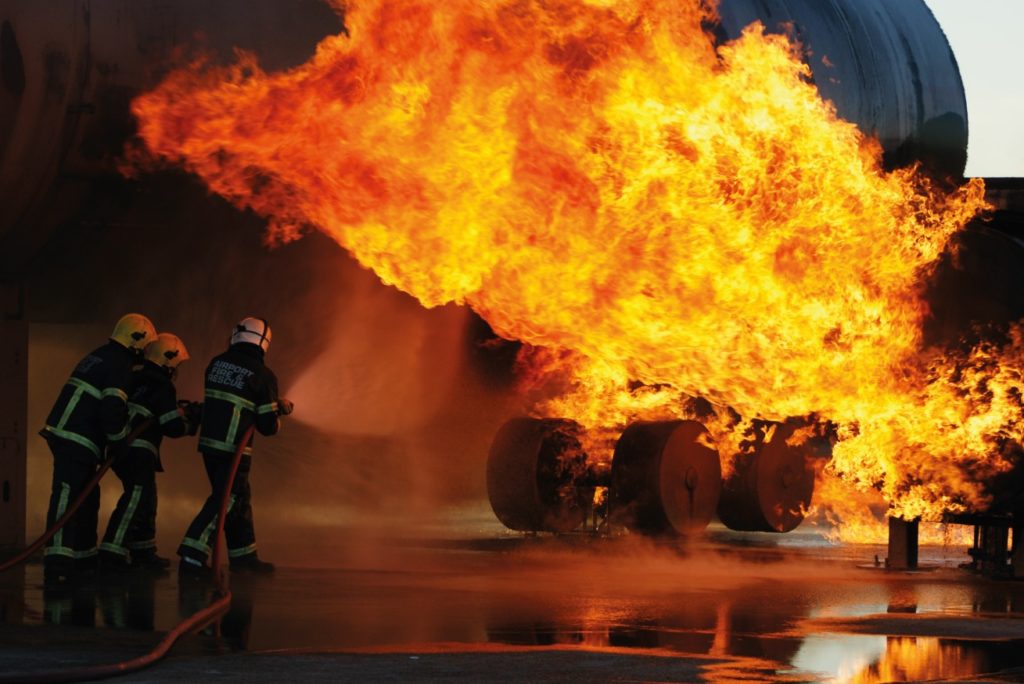Words by Aaron Karp
In early September last year, Hurricane Ida hit New Orleans hard. Signature Flight Support, the largest operator of FBOs in the world with more than 200 locations, safely evacuated its employees from its facility at Louis Armstrong New Orleans International Airport. But the hurricane completely destroyed the FBO’s terminal and offices.
Aside from a fatal aircraft accident, this was just about the worst case scenario for an emergency at an FBO. “It really wrecked the facility,” Jennifer Bartenstein, vice president for health, safety and environment for Signature Flight Support (SFS) says.
Nevertheless, the FBO was up and running the next day. “We didn’t have an office, we didn’t have a printer, but we made it happen out of some rental cars. We eventually upgraded to temporary facilities that have become our FBO while our facility is getting rebuilt,” Bartenstein says. “To my knowledge, we only had to turn away one aircraft.”
The rapid response was made possible by extensive emergency planning. “It falls under business continuity,” Bartenstein says. “So, it’s not only just responding to the emergency, but making sure our business continuity is there. I just think that is so critical.”
Manual work
Emergency preparedness at business airports and FBOs starts with emergency response manuals.
“Make sure policies and procedures specific to each person’s role in that response is part of any manual outlining emergency response plans,” says Kevin Honan, senior advisor of operations manuals and emergency response plans for business aviation operators at AviationManuals. The company assists business airports and FBOs with all types of manuals, including emergency response plans.
“Make sure each person’s role is well outlined and very clear,” Honan adds. “During an emergency, especially if there is an injury or fatality involved, it’s going to be hectic in the first hour getting everything together. Make sure your plan is covering everything, so everyone is singing from the same sheet of music.
“I recommend having some sort of manual system in place. That way, everyone is using a standard procedure.”
Bartenstein agrees that everyone involved in a potential emergency response needs to be quickly connected, making planning in advance crucial. “A saying in the emergency response world is that during the response to an accident is not the time to be exchanging business cards,” she says. FBOs generally have to be in contact with officials at the airport where they are located during the response to an aircraft accident or other incident, she notes.
Bartenstein adds, “You should already know who you are going to be working with in case something does happen and have established relationships well in advance. There is a huge difference when you already have each person’s phone number and you already know who to call.”
Regular exercises
 The next step for business airports and FBOs is to conduct emergency preparedness exercises. This summer London Biggin Hill Airport will hold a full-scale drill responding to a runway incursion that leads to an aircraft fire, fatalities and injuries.
The next step for business airports and FBOs is to conduct emergency preparedness exercises. This summer London Biggin Hill Airport will hold a full-scale drill responding to a runway incursion that leads to an aircraft fire, fatalities and injuries.
The airport’s fire service will set fire to an older fuselage no longer in use. A second aircraft, which is also no longer in use will not be set ablaze but will have 25 passengers – local residents acting as injured victims – who need to be evacuated and medically evaluated.
The exercise will take place on a Saturday, a deliberate choice since most senior staff are not at the airport. Part of the drill will be air traffic controllers communicating with senior airport staff and measuring how fast they can get from their homes to the airport. “We are testing all of our business continuity plans and our airport order emergency response plans to measure their effectiveness,” says Ben Spiers, head of safety and compliance at Biggin Hill.
In addition to the airport’s in-house fire and rescue service, the local police and fire department will be involved. If a significant aircraft crashed, it would be all hands on deck, including local first responders from outside of the airport.
The airport’s inhouse fire and rescue services “conduct regular drills to make sure they can respond to any incident at any place at the airport within two minutes,” says Spiers.
A full scale exercise is required at UK airports at least once every two years, although this will be the first at Biggin Hill in three years because of Covid-19. Airports and FBOs conduct planning meetings and table-top exercises on a more frequent basis. A table-top exercise is conducted at each of Signature’s FBOs annually.
“Emergency planning meetings enable consultation with third party local authorities and third party agencies,” Spiers explains. “We hold quarterly emergency planning meetings where we sit down with the local police, fire and ambulance services, along with the local councils and the different airport heads of departments to review, first and foremost, our emergency orders to make sure we align with local authorities and UK regulations.”
FBOs must coordinate closely with the airports at which they are located. “There may be some cases where airports have specific requirements,” Bartenstein, who oversees a staff of 20 dedicated to safety at Signature FBOs says. “We make sure our emergency plans coordinate with their plans. We make sure the emergency response plans are updated and accurate annually.
“When we come to a table-top or active exercise, in some cases we participate in an airport-driven exercise or invite them to ours.”
The director of security and the director of the airport recently participated in an Signature emergency exercise at the company’s FBO at Van Nuys Airport in California. “They provided great input and it was helpful for them to hear what our team members would expect to do in an emergency,” Bartenstein explains. “We try to stay very close to the airport.”
 She adds that emergency response planning needs to prepare for a wide range of potential emergencies and ensure plans for each scenario are detailed. For example, FBOs should keep a careful eye on their fuel farms, both to prevent fires and ensure enough fuel is on hand.
She adds that emergency response planning needs to prepare for a wide range of potential emergencies and ensure plans for each scenario are detailed. For example, FBOs should keep a careful eye on their fuel farms, both to prevent fires and ensure enough fuel is on hand.
“We are continuously monitoring our fuel loads to ensure it will be ready for emergency responders,” Bartenstein says. “When you have a bad storm, it’s going to be hard for the tanker to drive in. So if a storm is bearing down on an FBO, we make sure we have a little more fuel than we would normally
have on site, to be ready for not having fuel deliveries for a few days.”
Honan says that FBOs and business airports must “consider a variety of emergency scenarios, not just the typical aircraft accident.”
Additionally FBOs should tailor their emergency response plans to their location. For example, an FBO in Florida or the Caribbean should have extensive plans for tropical storms and hurricanes, while a Canadian FBO should have full plans for snow emergencies.
Signature deploys a plan that is orchestrated on the corporate level and then localizes it for each FBO in its system. The corporate plan details best practices, Bartenstein explains, while the localized plan is aimed at the specific circumstances of a given FBO and takes into account geographic location.
Another key element of emergency planning is to have a designated command center ready to activate to oversee the response. The hierarchy of who will be making decisions and giving orders should be well established in emergency response plans, say Spiers and Bartenstein. Signature has both an on site emergency command center at each FBO and a virtual corporate emergency command center that is activated in an emergency.
In the case of a hurricane like Ida, Signature activates a well rehearsed emergency response plan. With numerous locations in the southeast of the US and in the Caribbean, “sadly we are very good at responding to hurricanes,” Bartenstein says.
 “There is a corporate hurricane plan and things that each base has to do before a named storm. We have plans starting at 96 hours out from expected landfall. And then there’s more to do at 72 hours, 48 hours, etc.
“There is a corporate hurricane plan and things that each base has to do before a named storm. We have plans starting at 96 hours out from expected landfall. And then there’s more to do at 72 hours, 48 hours, etc.
“Part of that plan is to ensure our facilities are well prepared. We bring aircraft into hangars if they are not evacuated. We take the time to make sure our personnel are OK. We let individuals know if the airport is closing and don’t ask anybody to stay or be a hero. We don’t want anyone to get hurt. We plan for who will come back in the storm’s aftermath and ensure the safety of the facility.”





